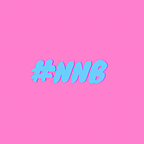Visible Thinking
As high school teachers in the NYC DOE, we all used to say the same thing to our students: “Make your thinking visible!”
When asked to compose a five-paragraph essay, write a formal lab report, or explain how to find the missing angle of a triangle, students were expected to describe their thought process. It was imperative that they explain to the reader, the exact steps from Point A to Point B.
For a small number of students, this was a daunting (and annoying) task, as their brain made subconscious leaps and it became cumbersome to try and reverse-engineer the baby steps in between. For others, it was the difference between a 70% and a 98% grade.
Thinking about the phrase — “Make your thinking visible” — now, I realize it’s more than an essential for students. It’s a tool for all levels of communication, and it’s something that leaders in any environment can model and utilize within their teams.
Making your thinking visible allows others an active opportunity to participate in your ideas. And it might not come through in sentences or texts only — word webs, models, graphics, phrases and photos might be more obvious illustrations of ideas for different thinkers.
It’s the mere act of requesting more information — the gift of being given more time to explain through a different medium — that will further encourage more risk-taking, collaboration, trust, and in turn, innovation.
Our society is hyper-focused on results, rather than steps. We seek outcomes, rather than the ambiguity and failure that can slow down the process. If late-stage capitalism and corporate America has taught us that optimization and the final product are one’s highest goals, the great resignation from being “operationalized” should be a sign that it’s time to rethink how we work.
Humans are each, by biological necessity, uniquely singular individuals. It is impossible to operationalize us (without the help of scary future-tech à la brain implants in Apple TV’s Severance). The way each of us thinks is unique, and that’s worth celebrating and sharing.
What if we could implement new systems, where top-down organizational structures created pathways for two-way feedback? What if communication and collaboration were tied to performance reviews? What if the questions we encouraged students to ask in school were seen as valuable and necessary in the professional world?
These are not quick wins or ready-to-go solutions, but that’s the point.
The standards of communication in America have been deteriorating for a long time, and we’ve especially seen a breakdown in our ability to have productive dialogue over the past two years. The more we ask of one another, and the less we offer mutual openness in the ways we are thinking, the heavier the hardship and suffering in the world weigh.
As ever, there is more to learn from each other.
